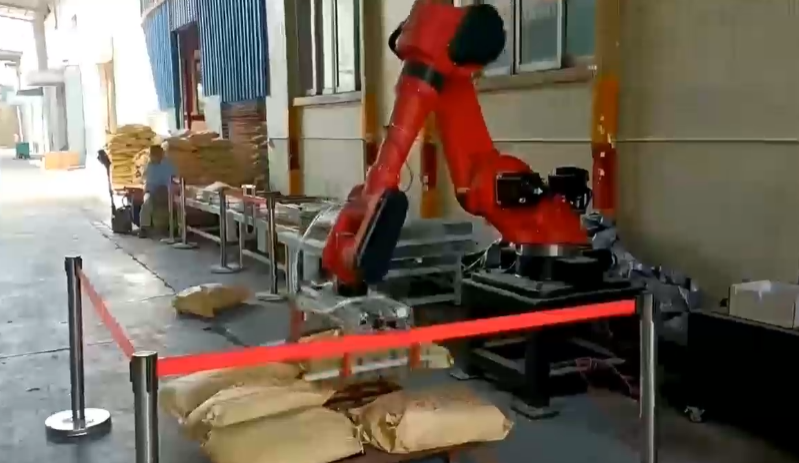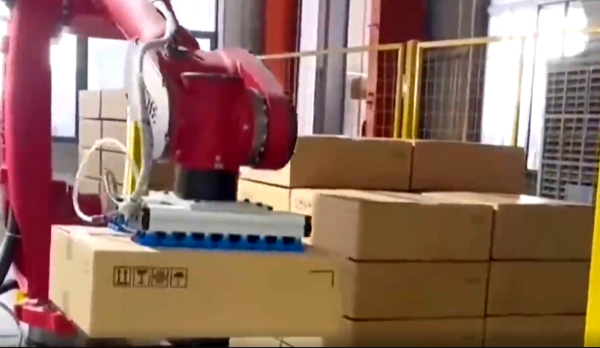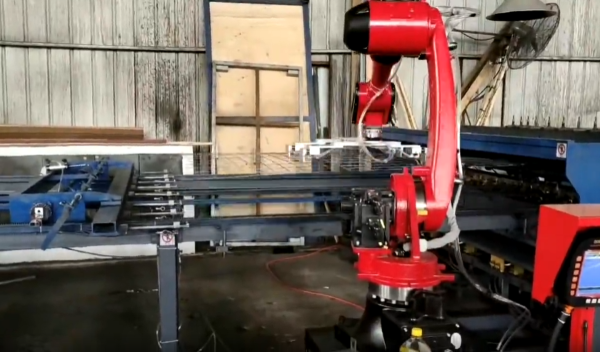“The threshold for palletizing is relatively low, entry is relatively fast, competition is fierce, and it has entered the saturation stage.”
In the eyes of some 3D visual players, "There are many players dismantling pallets, and the saturation stage has arrived with low profits, which is no longer considered a good business.

Is this really the case?
GGII has noticed that in the face of friends who are thriving, another group of 3D visual players firmly believe that "the penetration rate of automatic palletizing is very low, and there are still many areas that have not been conquered. The ceiling is high enough.
With the advancement of technology and the acceleration of modernization, people's requirements for handling speed are becoming higher and higher. However, with the trend of consumption upgrading, the types of incoming materials are abundant and frequently added. Traditional manual palletizing can only be applied in situations where materials are lightweight, with large changes in size and shape, and small throughput. If it still relies on manpower, it is far from meeting the speed requirements of enterprises.
From a scenario perspective, the dismantling and palletizing scenarios can be divided into single code, single code, mixed code, and mixed code. Common equipment includes palletizing machines, palletizing robots, robots+machine vision, etc.
So, it believe that players who are dismantling pallets and discussing swords can be roughly divided into two factions; Traditional palletizing machine pies and palletizing robot pies that do not require machine vision; The other faction is represented by machine vision players who are visually guided to dismantle pallets.
For terminal enterprises, palletizing machines and robots can make incoming materials more neat and aesthetically pleasing, save costs, and improve production efficiency, making them one of the sharp tools for accelerating automated production.
Where are the opportunities left for the machine vision faction as traditional palletizer faction and palletizing robot faction "mix up vigorously" in the palletizing market?

The Road to Differentiation - Mixed Palletizing
The common phenomenon in the market is that there are often followers and imitators, and occasionally there are disruptors, but the most difficult one is the founder.
When entering a certain market for the first time, the opportunity for players to receive admission tickets is how to focus on the pain points of the scene and walk out the path of differentiation.
Taking the palletizing of cardboard boxes as an example. From the perspective of the scene, the single code scene is relatively simple and traditional, basically using the same type of incoming material for palletizing, with palletizing machines and palletizing robots being more commonly used; Single dismantling is generally the dismantling of the same type of cardboard box, which requires visual guidance; Mixed dismantling mainly involves the dismantling of different types of cardboard boxes, which requires visual guidance; Mixing codes also involves different types of cardboard box palletizing and requires visual verification.
Therefore, in the view of 3D vision companies, the demand for 3D vision in the palletizing market is far from saturated.

1.Mixed dismantling
First, let's take a look at mixed dismantling.
So far, the cumulative number of visual depalletizing units (sets) in China has not reached 10000, and automated depalletizing has not yet been achieved. The proportion of depalletizing that requires visual cooperation is very high.
Fei Zheping predicts that this proportion may exceed 90% in the future. At present, depalletizing is the most widely used and demanding scenario in the automation industry. 80% -90% of robot hand eye collaboration applications are on depalletizing, and palletizing (single code) is less than 10%.
Therefore, from the perspective of market demand and technical capabilities, depalletizing application scenarios can be standardized and foolproof, without any secondary development.
2. Mixed code
Unlike other scenarios, in the palletizing scenario, mixed coding is the most complex. How to place goods of different categories, sizes, and shapes on the same pallet and achieve a certain level of work efficiency is the difficulty of mixed coding work.
For example, during the process of storage and transportation, the proportion of palletized transportation is relatively low, with 70-80% of the goods being non palletized. The automation penetration rate of this process is relatively low, as pallets need to be taken down and collected back.
Automated penetration rate of mixed palletizing?
The demand for mixed palletizing has arrived, and the pain points are obvious. The challenge facing 3D visual players is - how to accelerate the increase in automation penetration rate of mixed palletizing?
For 3D visual players, the top priority is to solve the problem of low efficiency.
For example, in practical scenarios, it is common to encounter the problem of disorderly mixed palletizing, where goods are randomly delivered to the palletizing workstation with various sizes and specifications along conveyor belts. Due to the workstation's inability to anticipate all upcoming product specifications and dimensions on the conveyor belt, it is not possible to achieve global optimal planning.
The existing BPP (Bin Packaging Problem) algorithm cannot be directly used in actual logistics scenarios. This type of palletizing problem, where all product specifications and dimensions cannot be known in advance, is more complex than the general online packing BPP-k problem (K refers to the product specifications and dimensions that can be known in advance by the palletizing workstation).
In practical application scenarios, is k equal to 1 or 3? Can the device pick up one item out of three, or can one item be picked up for just one item? Whether it can be predicted in advance, the requirements for algorithms will be relatively high. At the same time, the size and height of the goods are also one of the factors that affect the algorithm. Due to the characteristics of pallets, the palletizing algorithm is more complex than the general BPP-k packing algorithm, considering not only the loading rate but also the stability of the palletizing shape.
King Sanad Yoshiyama pointed out: For 3D vision enterprises, the technical difficulty of mixed code scenes lies in the algorithm level. By leveraging our algorithm advantages, not only can we solve problems such as mixed code and mixed disassembly that traditional palletizers and unloaders cannot solve, but we can also optimize intelligent algorithms such as visual recognition algorithms, motion planning algorithms, stack type planning algorithms, and palletizing algorithms to improve tray utilization, stack stability, loading rate, and so on.
However, in the eyes of other players, objects with diverse shapes and sizes are also one of the reasons for the low penetration rate of hybrid depalletizing automation.
At present, the mainstream depalletizing objects in the market are sacks, cartons and foam boxes. Different working objects have different requirements for 3D vision.
Targeting pain points, through the competitive barriers established by their core technologies, identify the low automation links of mixed code and provide targeted solutions.
The Sanad 3D visual intelligent palletizing workstation adopts a high frame and high-resolution DLP binocular stereo camera, which has strong recognition for package contours of different colors, materials, and sizes; Based on deep learning algorithms, it can achieve segmentation and positioning of all types of stacked packages, combining 2D and 3D information to accurately obtain package color, size, contour, position, angle and other information; Equipped with advanced algorithms such as collision detection and trajectory planning, it can effectively avoid collisions and grab single or multiple objects at once according to actual situations; Support mixed box style palletizing and cage dismantling.
In addition, in a sense, this is an opportunity for machine vision enterprises, as well as for robotics enterprises.
Faced with the infinite opportunities hidden in hybrid depalletizing, roboticists and visually guided destackers have begun to work together.
Is visual guidance for palletizing still a good business?
To get to the point, is palletizing still a good business?
According to research data from GGII, in 2022, the shipment volume of 3D cameras guided by robots in China exceeded 8500 units, of which approximately 2000 units were shipped for palletizing, accounting for about 24%.
From the perspective of data, 3D vision still has great potential for development in the application of palletizing. Faced with the market space released by palletizing, machine vision companies are actively laying out or proposing solutions, or releasing hardware products and software systems to meet flexible and diverse mixed palletizing needs, helping enterprises reduce costs and increase efficiency.
Several industry insiders have expressed, "Whether it is a good business or not, only by joining the industry can one have a better understanding
In the face of a sharp increase in players, in Fei Zheping's view, there is only one path to the ultimate pattern and winner of the depalletizing market: truly low-cost standardized products.
The so-called standardization refers to the integration of 3D cameras and depalletizing software, which can be regarded as a single product. Customers do not need visual debugging at all, and can quickly get started and achieve real on-site rapid deployment.
So, is visual guided palletizing still a good business?
Post time: Oct-09-2023








